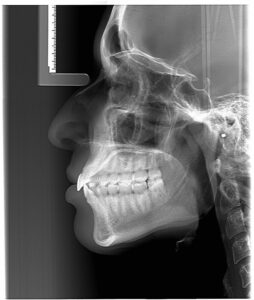Header logo
header top contact widget
Learn More Blog
As You Age, Avoid A ‘Melting’ Face With Dental Implants
Posted on Feb 26, 2024 by William J. Claiborne, DDS MS
It seems the older one gets, the more conscious he or she is to the need for good health practices. While periodic exams and check-ups are part of this, eating healthy and getting ample exercise are practical ways to support a healthy body.
The same principles apply to oral health. While annual physical exams are needed, regular check ups and dental hygiene cleanings are as well. Through decades of research, “bad” bacteria in the mouth can lead to inflammatory reactions that can offset or worsen a number of health problems far beyond the mouth.
For now, let’s focus on your gum health and the presence of teeth. While natural teeth are the ideal structure for biting, chewing and speaking, the rigors of age – the natural wear and tear – can take its toll on teeth. Decay, gum disease, accidents and certain illnesses can lead to losing a tooth or teeth over the span of a lifetime.
There are several ways to replace a missing tooth (or teeth). A crown-&-bridge is a longstanding method to replace one or several teeth in one area. Or, a partial denture can replace a “scattering” of teeth in the same arch. However, the downside of these oral prosthetics is what’s beneath the gum line.
Your natural teeth are supported by your upper and lower jaw bone, known respectfully as the maxilla and mandible. With these strong, study bones, tooth roots are held securely. Thus, biting and chewing occurs comfortably.
The jaw bones are actually kept healthy by the presence of tooth roots. These roots provide stimulation to the bone as well as nourishment that feeds through the tooth’s interior.
When a tooth is removed, so is the stimulation and nourishment to that area of the jaw bone. Without it, the bone begins to shrink. As it declines in height, the adjacent teeth are more vulnerable to loss. Statistics show that teeth adjacent to areas where natural teeth are missing will be the most likely to be lost next.
This has a domino effect. Partials can replace the presence of teeth above the gum line, but there is nothing to benefit the jaw bones below. Thus, tooth loss continues and can go from a few missing teeth to losing all teeth (being “edentulous”).
According to the Center for Disease Control & Prevention (CDC), 69 percent of adults between the ages of 35 – 44 have lost at least one permanent tooth. By age 50, Americans are missing an average of 12 teeth. For adults between the ages of 65 – 74, 26 percent are missing all of their natural teeth. That’s over one-fourth of the adult population over age 65.
Although dentures and partials mimic the presence of teeth, the jaw bones below are shrinking away, and at a rather rapid pace. The pressure of wearing a denture or partial actually speeds this process up, known as “resorption.”
As these bones decline in mass, deep wrinkles form around the mouth. The corners of the mouth turn downward. The chin takes on a more pointed form and the mouth sinks into the face. The nose seems to get closer to the chin as the jaw bones thin. Jowls form as facial muscles detach from shrinking bone structure.
Changes in facial appearance also take place when bone structures shrink. For example, as the jaw bone thins, deep wrinkles form around the mouth. The corners of the mouth will start to turn down, even in a smile. Jowls form on each side of the face as facial muscles detach from the shrinking bone structure.
As the jaw bone declines further, the chin becomes more pointed and the nose seems to get closer to it. This leads to a collapsed mouth that is known as a “granny look.” This look ages the appearance of an individual far beyond their actual years.
Not to be overlooked is the ability to comfortably bite and chew food. This is essential for the digestive process, since the first stage of digestion begins in the mouth. When adults struggle to eat with a denture or partial, the efficiency of this initial stage of digestion is compromised.
It’s not unusual for adults who have “rocky” or “slippery” dentures to opt for soft foods that dissolve easily in the mouth. These are often carb heavy and lack the nutritional value of a diet that combines healthy proteins, fruits and vegetables.
However, missing teeth or dentures that move when eating can cause other detrimental problems. When people sense their dentures may cause embarrassment when eating, speaking or laughing with others, social involvement can take a hit. According to a 2012 statement by the World Health Organization:
“Oral health is essential to general health and quality of life. It is a state of being free from mouth and facial pain, oral and throat cancer, oral infection and sores, periodontal (gum) disease, tooth decay, tooth loss, and other diseases and disorders that limit an individual’s capacity in biting, chewing, smiling, speaking, and psycho-social well-being.”
As an Asheville periodontist, my dental specialty includes the diagnosis and placement of dental implants. Dental implants are the closest thing to natural teeth.
Dental implants were designed to recreate the presence of natural teeth both above and below the gum line. Because teeth attached to the implants are supported by the jaw bone, the study foundation restores the ability to bite and chew without movement or fear of embarrassing slips.
For patients who are missing a great deal of bone, we offer bone rebuilding that does not require a bone graft. We also perform sinus lifts (when the upper jaw has declined to a significant level) to restore sufficient bone distance between vital structures.
For many of our dental implant patients, their lives become more active with the restored confidence. They become more socially involved, have more self-confidence and higher self-esteem. And the advantages of dental implants over other tooth replacement options are numerous.
• Dental implants are designed to last your lifetime. They do not decay, need root canals or compromise neighboring teeth or bone structure.
• Because dental implants are positioned in the jaw, they recreate stimulation to the bone. This helps to preserve the bone’s mass, halting the pace of jaw bone shrinkage (known as resorption).
• Resorption is what causes changes in one’s facial appearance, aging one’s appearance far older than their actual age.
• Dental implants do not move or slip when eating, speaking or laughing. A denture is designed to fit the contours of one’s gum ridge; contours that exist at the time the denture is made. However, as resorption reduces bone height, the ridge that holds the denture flattens out over time. This is why a denture becomes ‘wobbly’ or ‘slippery.’
• Dental implant treatment is largely determined by the number of implants placed. In most cases, one implant can support more than one tooth. A full arch (all upper or lower) of teeth are typically supported by several strategically-placed implants.
• Unlike a crown-&-bridge, dental implants so not need the support of adjacent teeth. Therefore, it is not necessary to have teeth shaved down for crowning simply to serve as supports for a bridge.
In our Asheville periodontal dental office, we have highly-advanced technology that aids in the diagnosis and placement process of dental implants. These features help to enhance patient comfort, shorten treatment time, and provide optimal results. Advanced technology includes:
– Computerized Dental Implant Placement – an advanced system for pre-surgical positioning of dental implants using a 3D model of the patient’s jaw. Once the implant type is selected, a template is developed for optimal treatment success.
– Cone Beam Imaging – is ideal for diagnoses and treatment planning through images that provide a clear view of the upper and lower jaw (including nerve canals), with rotations that show sagittal, axial, and coronal planes in a process that is quick, painless and at minimal radiation levels.
– Dental Laser – This small, hand-held device is a tremendous asset when it comes to both the health and appearance of gum tissues. Not only does the laser eliminate or greatly minimize bleeding during procedures, it reduces numbing requirements, removes bacteria and easily uncovers gum tissue where dental implants have been placed. Additionally, laser dentistry can beautifully re-contour or repair gum tissue with a precision line.
As a periodontal specialist serving Western NC, I take great pride in the diagnosis and placement of dental implants with each selected based upon the patient’s individual needs and goals. We provide oral or I.V. sedation to ensure a comfortable experience and a friendly, respectful environment.
To schedule an examination appointment or to begin with a consultation, call 828-274-9440. A referral is not always necessary.
Recent Posts
Categories
Archives
- September 2024
- August 2024
- July 2024
- June 2024
- May 2024
- April 2024
- March 2024
- February 2024
- January 2024
- December 2023
- November 2023
- October 2023
- September 2023
- August 2023
- July 2023
- June 2023
- May 2023
- April 2023
- March 2023
- February 2023
- January 2023
- December 2022
- November 2022
- October 2022
- September 2022
- August 2022
- July 2022
- June 2022
- May 2022
- April 2022
- March 2022
- February 2022
- January 2022
- December 2021
- November 2021
- October 2021
- September 2021
- August 2021
- July 2021
- June 2021
- May 2021
- April 2021
- March 2021
- February 2021
- January 2021
- December 2020
- November 2020
- October 2020
- September 2020
- August 2020
- July 2020
- June 2020
- May 2020
- April 2020
- March 2020
- February 2020
- January 2020
- December 2019
- November 2019
- October 2019
- September 2019
- August 2019
- July 2019
- June 2019
- May 2019
- April 2019
- March 2019
- February 2019
- January 2019
- December 2018
- November 2018
- October 2018
- September 2018
- August 2018
- July 2018
- June 2018
- May 2018
- April 2018
- March 2018
- February 2018
- January 2018
- December 2017
- November 2017
- October 2017
- September 2017
- August 2017
- July 2017
- June 2017
- May 2017
- April 2017
- March 2017
- February 2017
- January 2017
- December 2016
- November 2016
- October 2016
- September 2016
- August 2016
- July 2016
- June 2016
- May 2016
- April 2016
- March 2016
- February 2016
- January 2016
- December 2015
- November 2015
- October 2015
- September 2015
- August 2015
- July 2015
- June 2015
- May 2015
- April 2015
- March 2015
- February 2015
- January 2015
- December 2014
- November 2014
- October 2014
- September 2014
- August 2014
- July 2014
- June 2014
- May 2014
- April 2014
- March 2014
- February 2014
- January 2014
- December 2013
- November 2013
- October 2013
- September 2013
- August 2013
- July 2013
- June 2013
- May 2013
- April 2013
- March 2013
- February 2013
- January 2013
- December 2012
- November 2012
- October 2012
- September 2012
- August 2012
- July 2012
- June 2012

